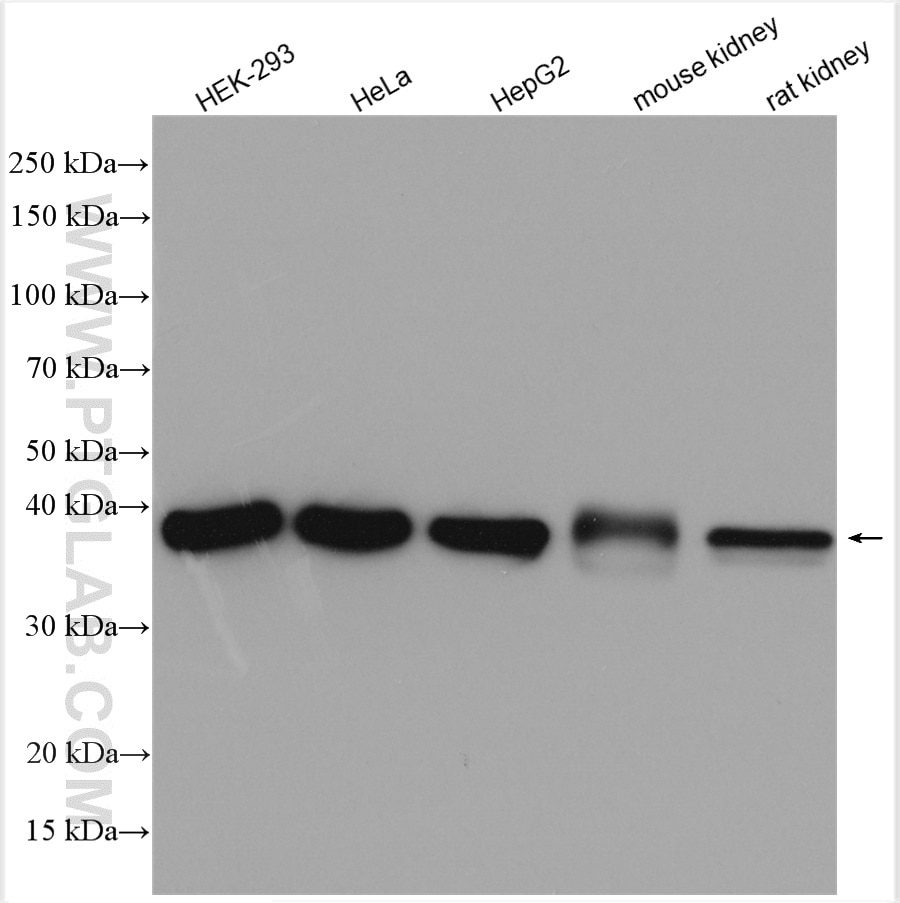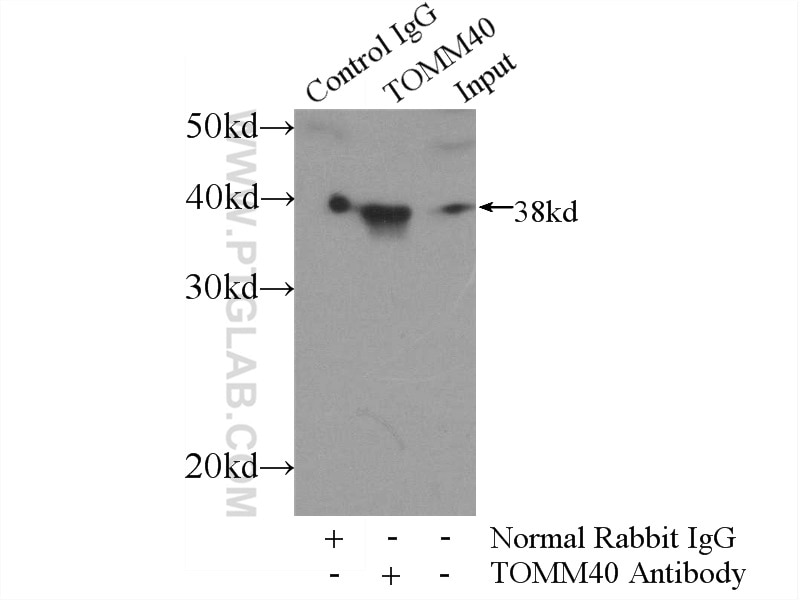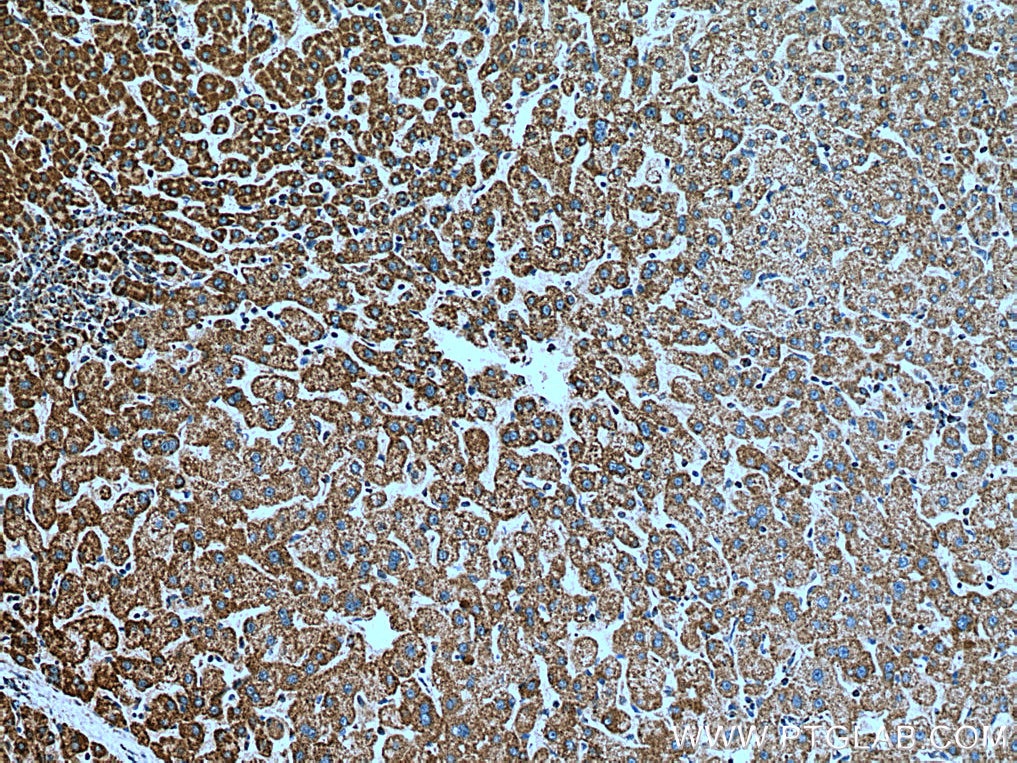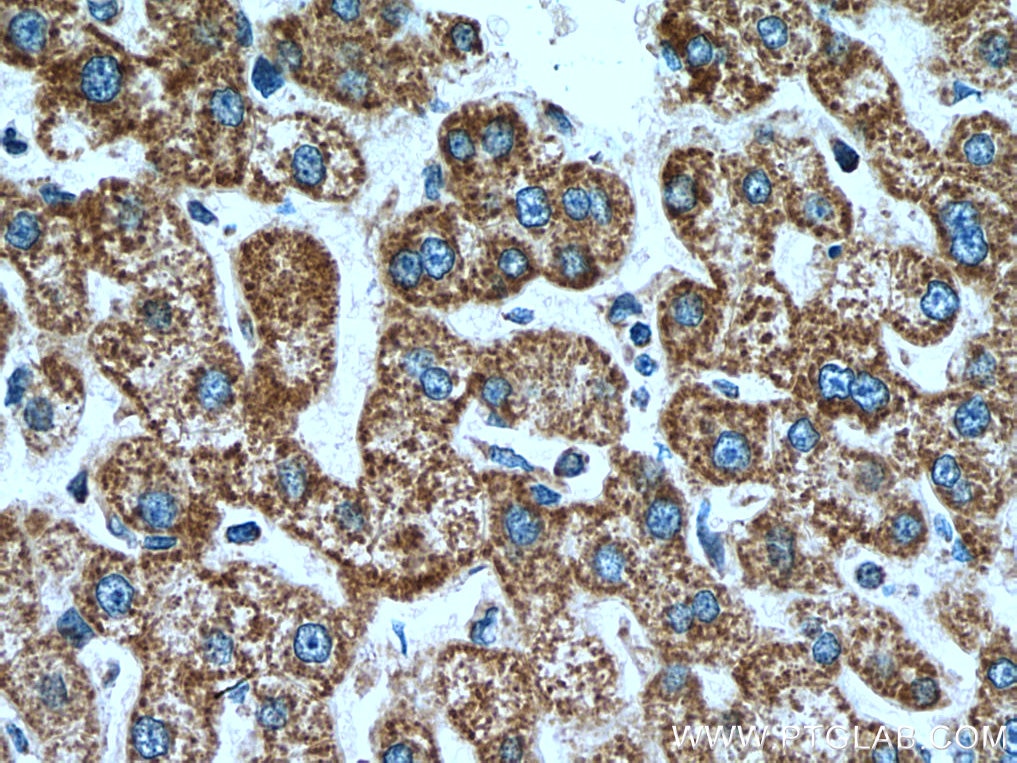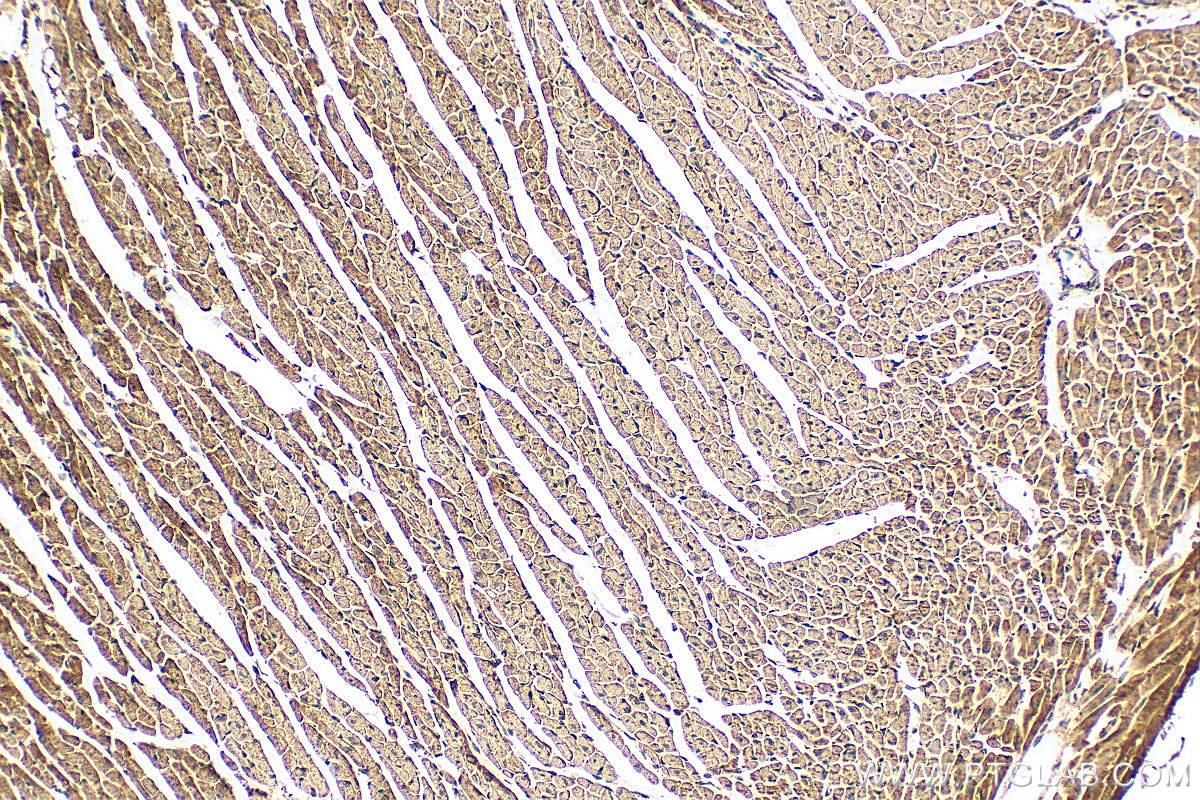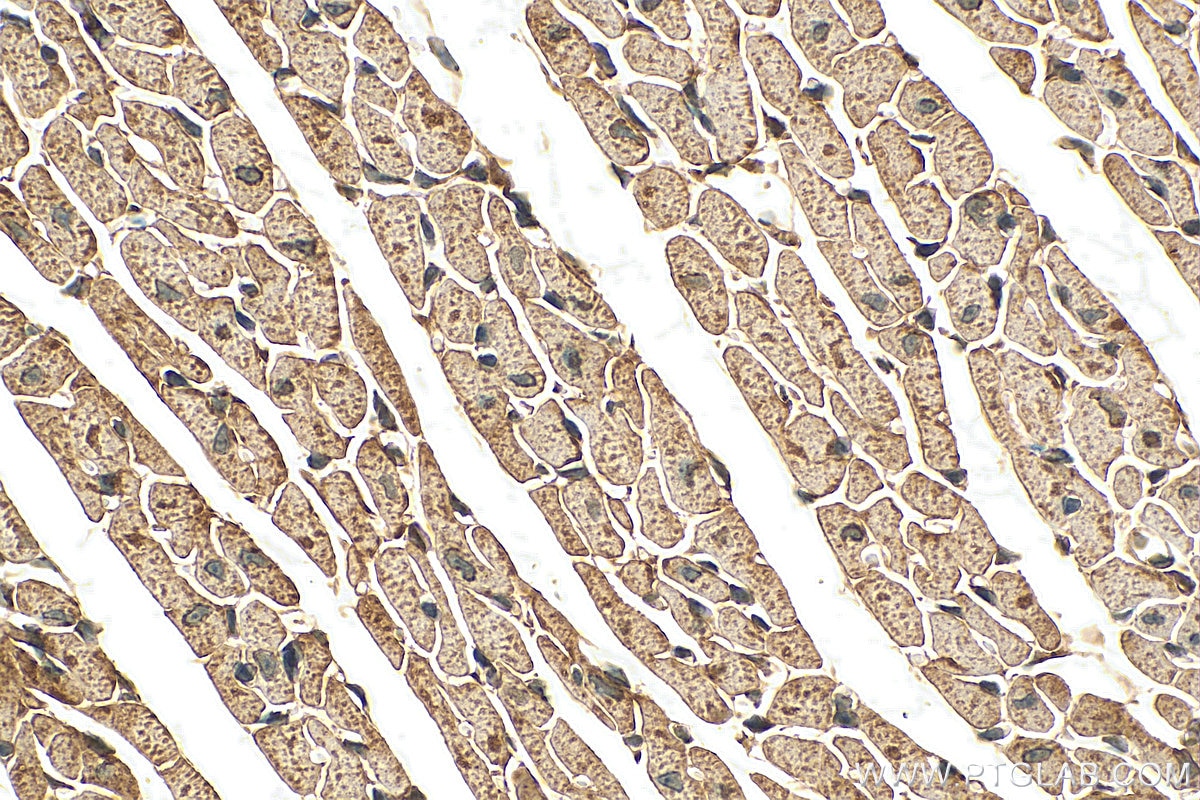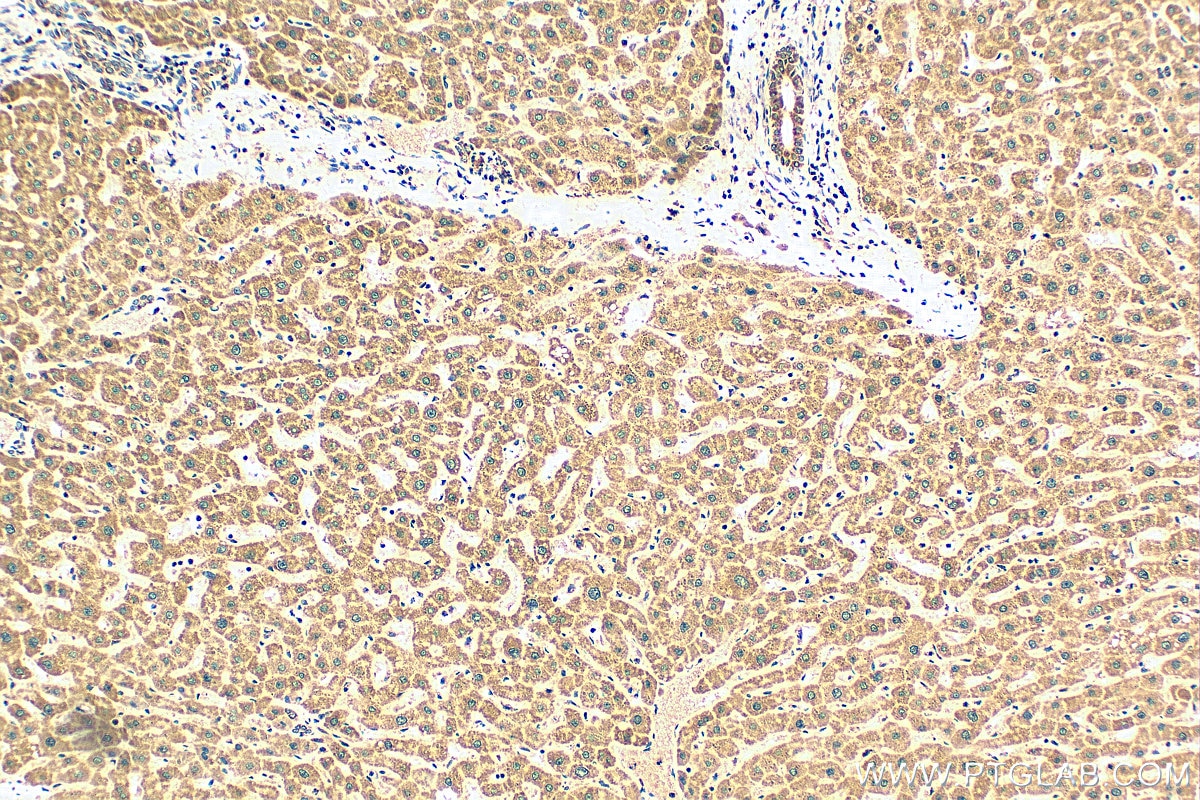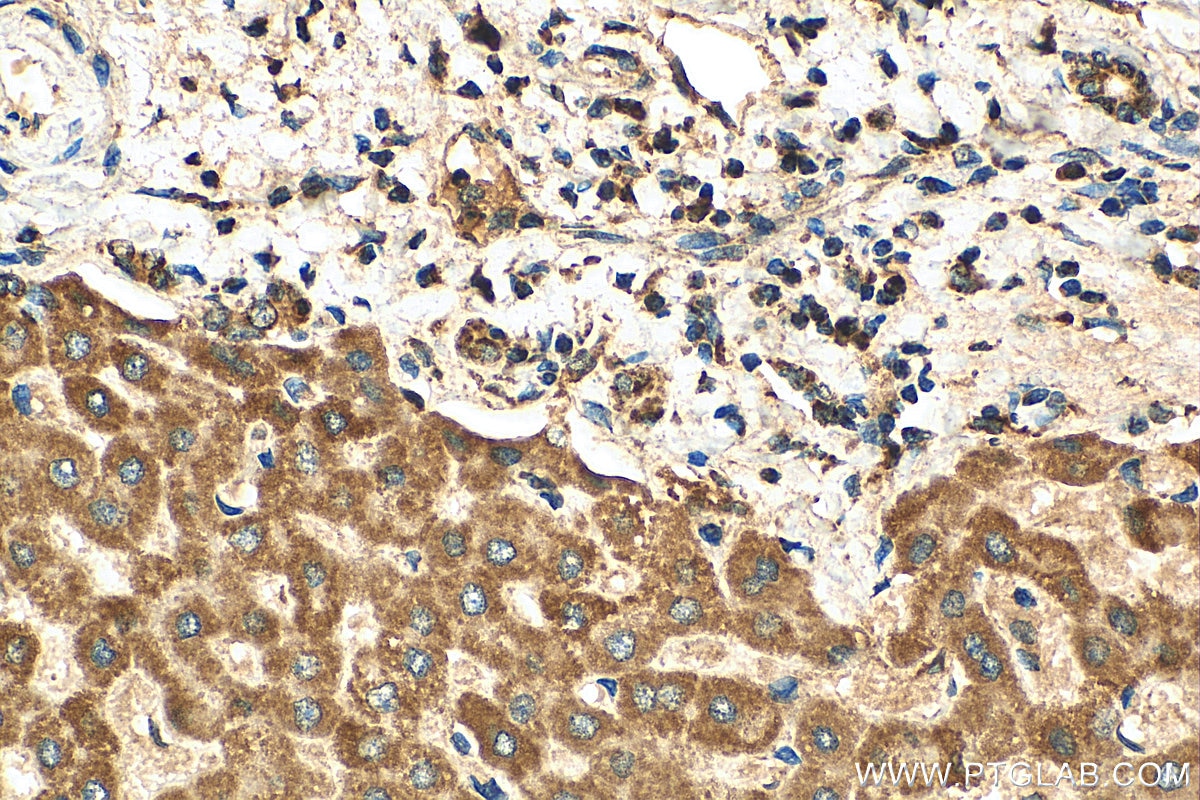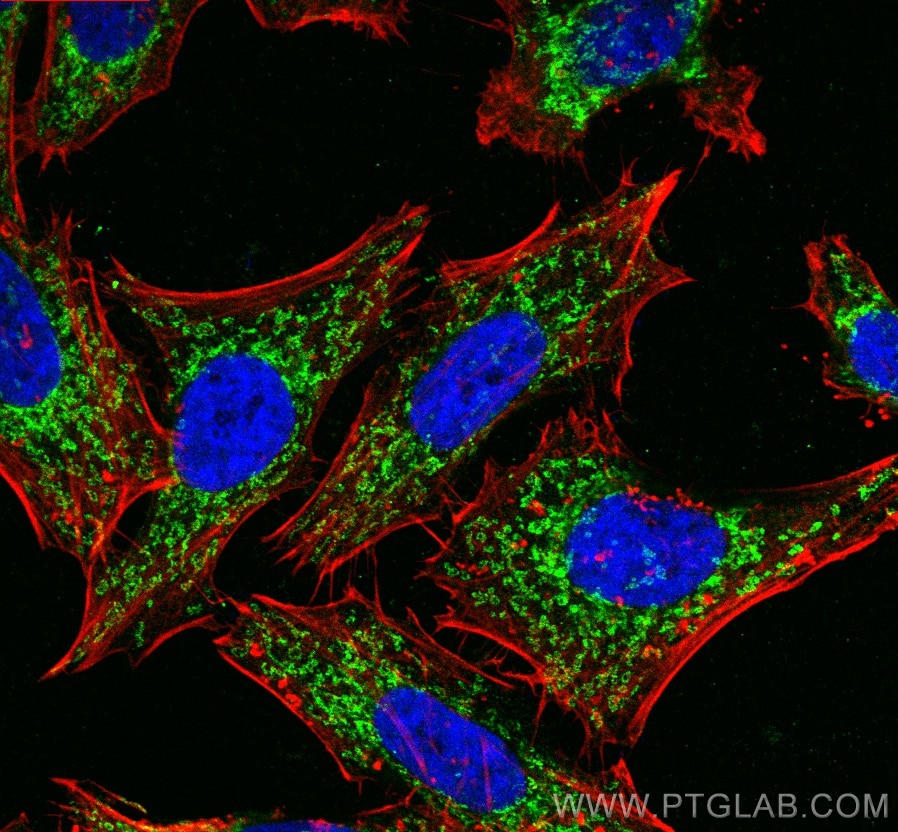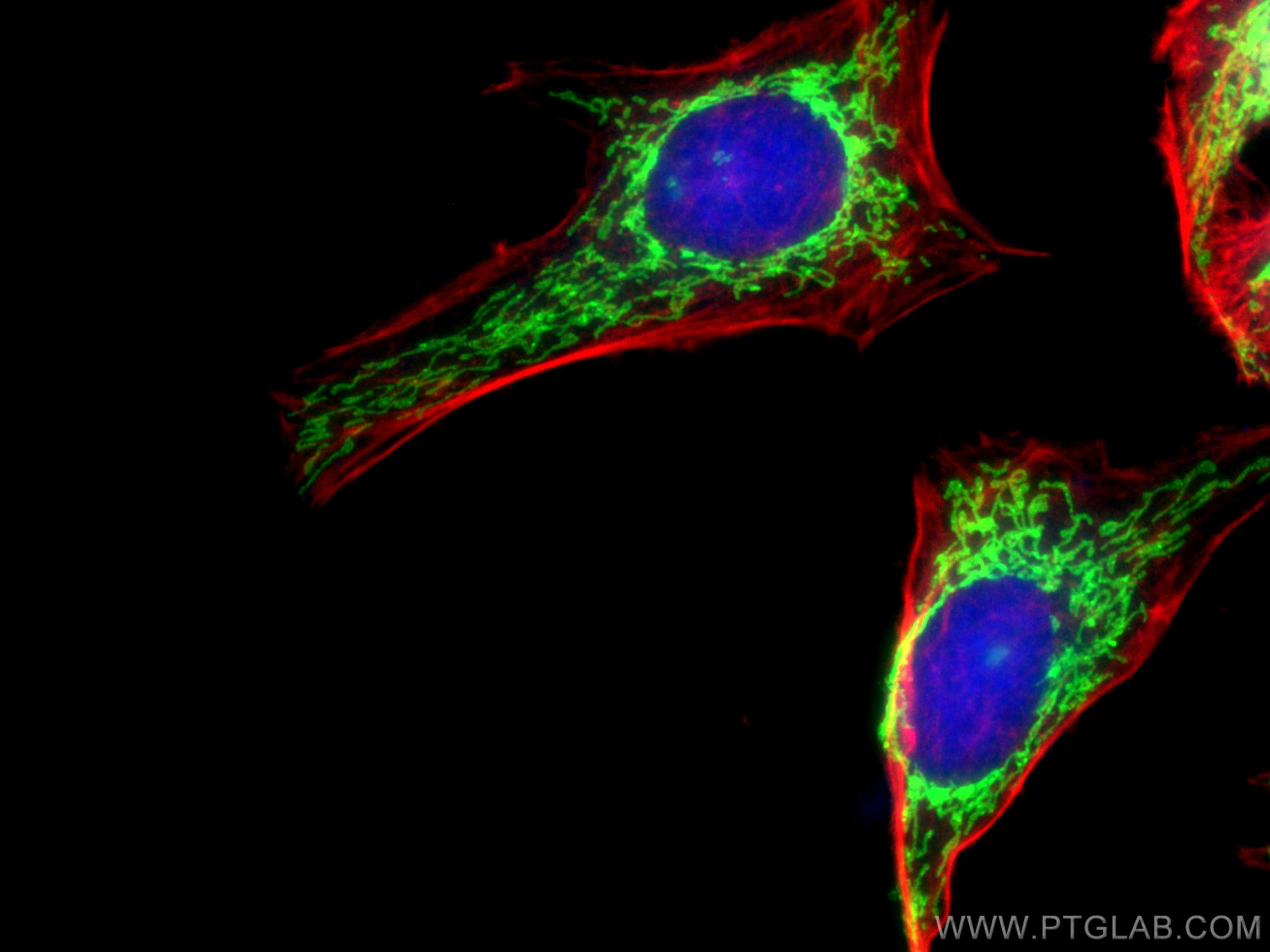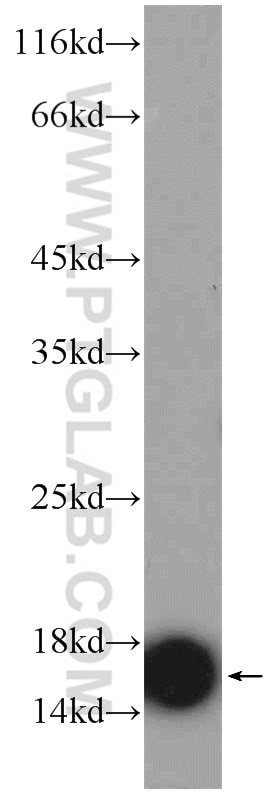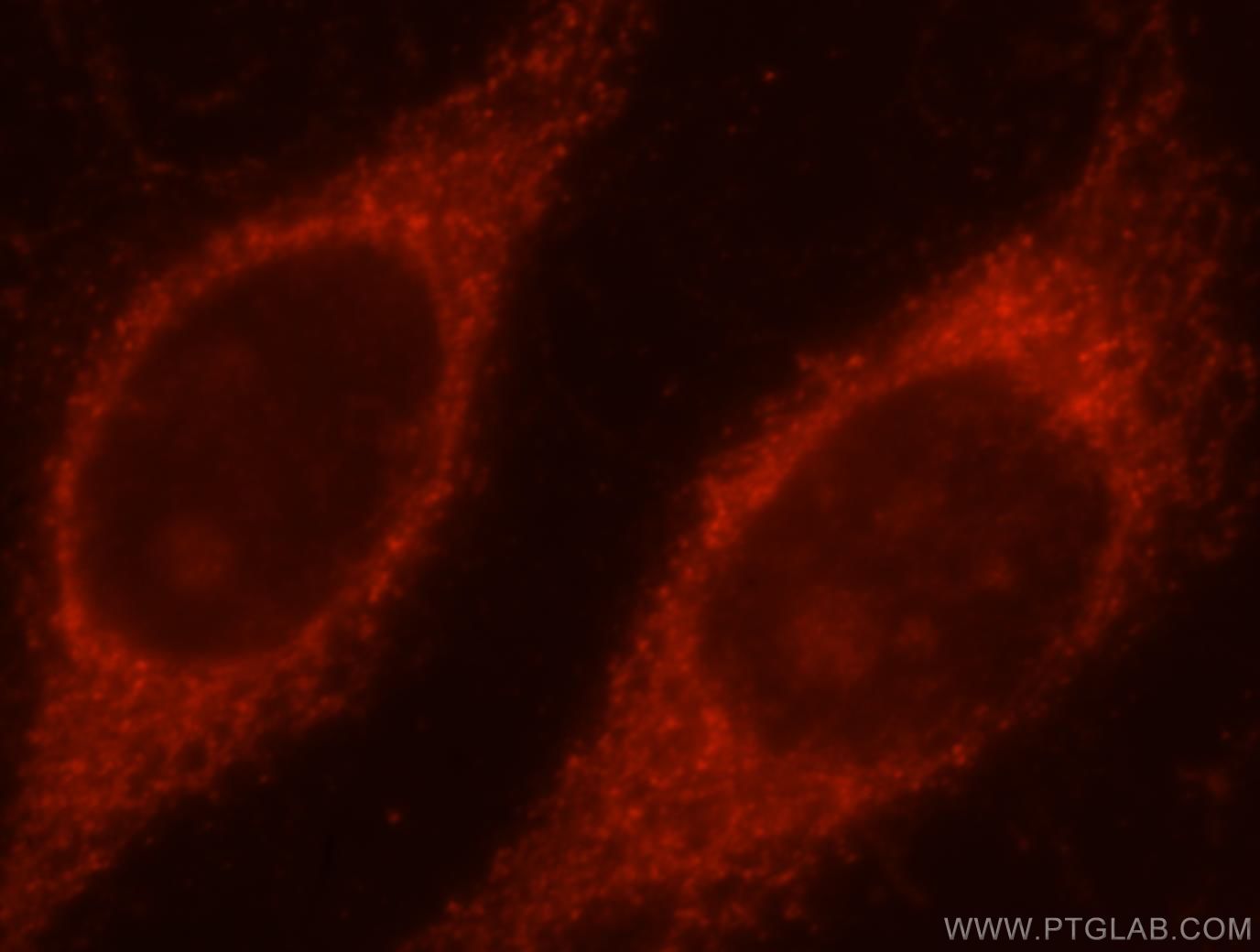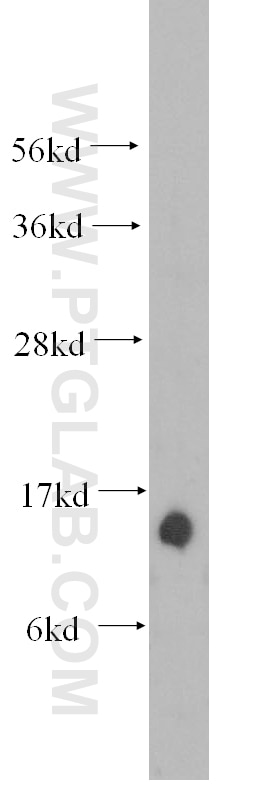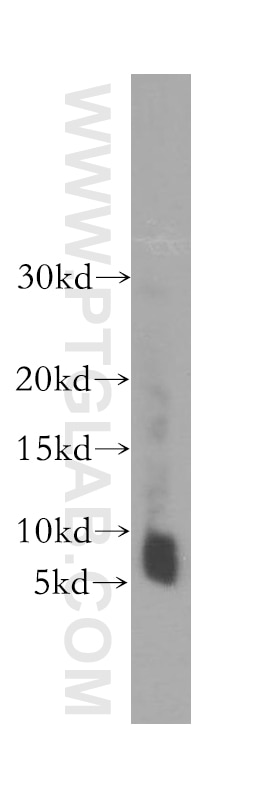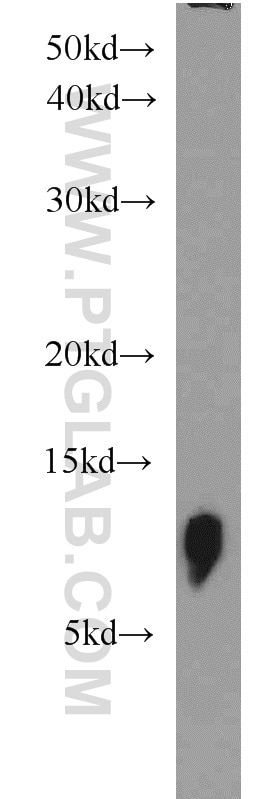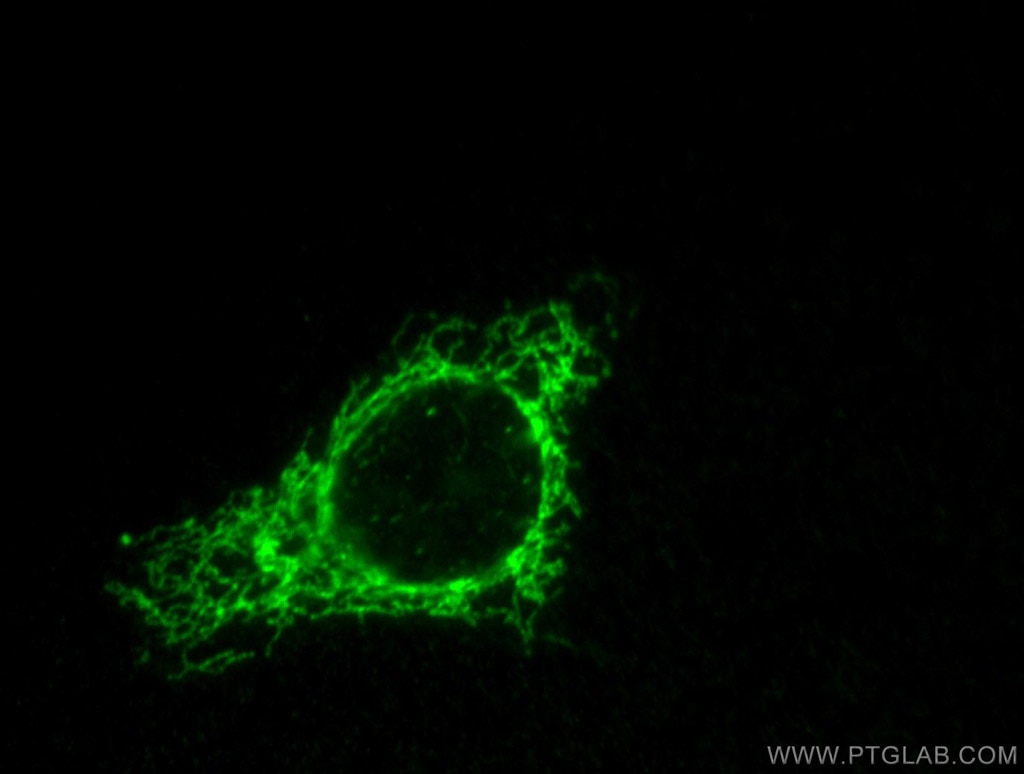- Phare
- Validé par KD/KO
Anticorps Polyclonal de lapin anti-TOMM40
TOMM40 Polyclonal Antibody for WB, IP, IF, IHC, ELISA
Hôte / Isotype
Lapin / IgG
Réactivité testée
Humain, rat, souris et plus (2)
Applications
WB, IHC, IF/ICC, IP, CoIP, ELISA
Conjugaison
Non conjugué
N° de cat : 18409-1-AP
Synonymes
Galerie de données de validation
Applications testées
| Résultats positifs en WB | cellules HEK-293, cellules HeLa, cellules HepG2, tissu rénal de rat, tissu rénal de souris |
| Résultats positifs en IP | tissu hépatique de souris |
| Résultats positifs en IHC | tissu hépatique humain, tissu cardiaque de souris il est suggéré de démasquer l'antigène avec un tampon de TE buffer pH 9.0; (*) À défaut, 'le démasquage de l'antigène peut être 'effectué avec un tampon citrate pH 6,0. |
| Résultats positifs en IF/ICC | cellules HepG2, cellules HeLa |
Dilution recommandée
| Application | Dilution |
|---|---|
| Western Blot (WB) | WB : 1:2000-1:16000 |
| Immunoprécipitation (IP) | IP : 0.5-4.0 ug for 1.0-3.0 mg of total protein lysate |
| Immunohistochimie (IHC) | IHC : 1:50-1:500 |
| Immunofluorescence (IF)/ICC | IF/ICC : 1:200-1:800 |
| It is recommended that this reagent should be titrated in each testing system to obtain optimal results. | |
| Sample-dependent, check data in validation data gallery | |
Applications publiées
| KD/KO | See 3 publications below |
| WB | See 74 publications below |
| IHC | See 1 publications below |
| IF | See 16 publications below |
| IP | See 1 publications below |
| CoIP | See 2 publications below |
Informations sur le produit
18409-1-AP cible TOMM40 dans les applications de WB, IHC, IF/ICC, IP, CoIP, ELISA et montre une réactivité avec des échantillons Humain, rat, souris
| Réactivité | Humain, rat, souris |
| Réactivité citée | rat, bovin, Humain, singe, souris |
| Hôte / Isotype | Lapin / IgG |
| Clonalité | Polyclonal |
| Type | Anticorps |
| Immunogène | TOMM40 Protéine recombinante Ag13065 |
| Nom complet | translocase of outer mitochondrial membrane 40 homolog (yeast) |
| Masse moléculaire calculée | 38 kDa |
| Poids moléculaire observé | 38 kDa |
| Numéro d’acquisition GenBank | BC017224 |
| Symbole du gène | TOMM40 |
| Identification du gène (NCBI) | 10452 |
| Conjugaison | Non conjugué |
| Forme | Liquide |
| Méthode de purification | Purification par affinité contre l'antigène |
| Tampon de stockage | PBS avec azoture de sodium à 0,02 % et glycérol à 50 % pH 7,3 |
| Conditions de stockage | Stocker à -20°C. Stable pendant un an après l'expédition. L'aliquotage n'est pas nécessaire pour le stockage à -20oC Les 20ul contiennent 0,1% de BSA. |
Informations générales
The translocase of outer mitochondria membrane 40 (TOMM40, also known as TOM40), located in the center of the TOM complex, is a channel-forming subunit of translocase. It can facilitate the fluid movement of preproteins into the mitochondria by associating with TOMM20. TOMM40 plays a role in the assembly of the mitochondrial membrane respiratory chain NADH dehydrogenase (Complex I) by forming a complex with BCAP31 and mediating the translocation of Complex I components from the cytosol to the mitochondria (PMID: 31206022). TOMM40 has been reported to be associated with late-onset neurodegenerative diseases such as Alzheimer's disease and Parkinson's disease.
Protocole
| Product Specific Protocols | |
|---|---|
| WB protocol for TOMM40 antibody 18409-1-AP | Download protocol |
| IHC protocol for TOMM40 antibody 18409-1-AP | Download protocol |
| IF protocol for TOMM40 antibody 18409-1-AP | Download protocol |
| IP protocol for TOMM40 antibody 18409-1-AP | Download protocol |
| Standard Protocols | |
|---|---|
| Click here to view our Standard Protocols |
Publications
| Species | Application | Title |
|---|---|---|
Nature In vivo imaging of mitochondrial membrane potential in non-small-cell lung cancer. | ||
Cell Tau interactome maps synaptic and mitochondrial processes associated with neurodegeneration. | ||
Cell Discov The Fe-S cluster assembly protein IscU2 increases α-ketoglutarate catabolism and DNA 5mC to promote tumor growth | ||
Cell Metab Quantitative high-confidence human mitochondrial proteome and its dynamics in cellular context.
| ||
Nat Cell Biol MIROs and DRP1 drive mitochondrial-derived vesicle biogenesis and promote quality control. |
Avis
The reviews below have been submitted by verified Proteintech customers who received an incentive forproviding their feedback.
FH Nuo (Verified Customer) (01-28-2023) | Good antibody for WB with high titer.
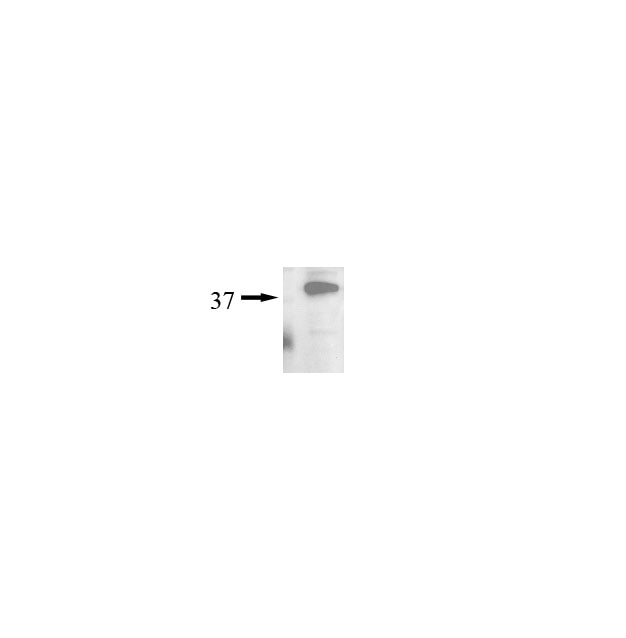 |
FH Süleyman (Verified Customer) (01-23-2022) | TOMM40 antibody (Green) is used 1:100 dilution (2 hour at RT) and 1:700 of Alexa Fluor 488 secondary antibody (1 hour RT). 4% Paraformaldehyde fixation for 10 min at RT. Permeabilization with 0.3% Triton X for 10-15 minutes at RT. 5% FBS in PBS used for blocking for 1 hour at RT. The image is colocalized with TOMM20 (Red). Blue is DAPI. As you can see there is colocalization with TOMM20 with TOMM40. It is a perfect colocalization. You might also reduce concentration to 1:300 as it was used low power of laser.
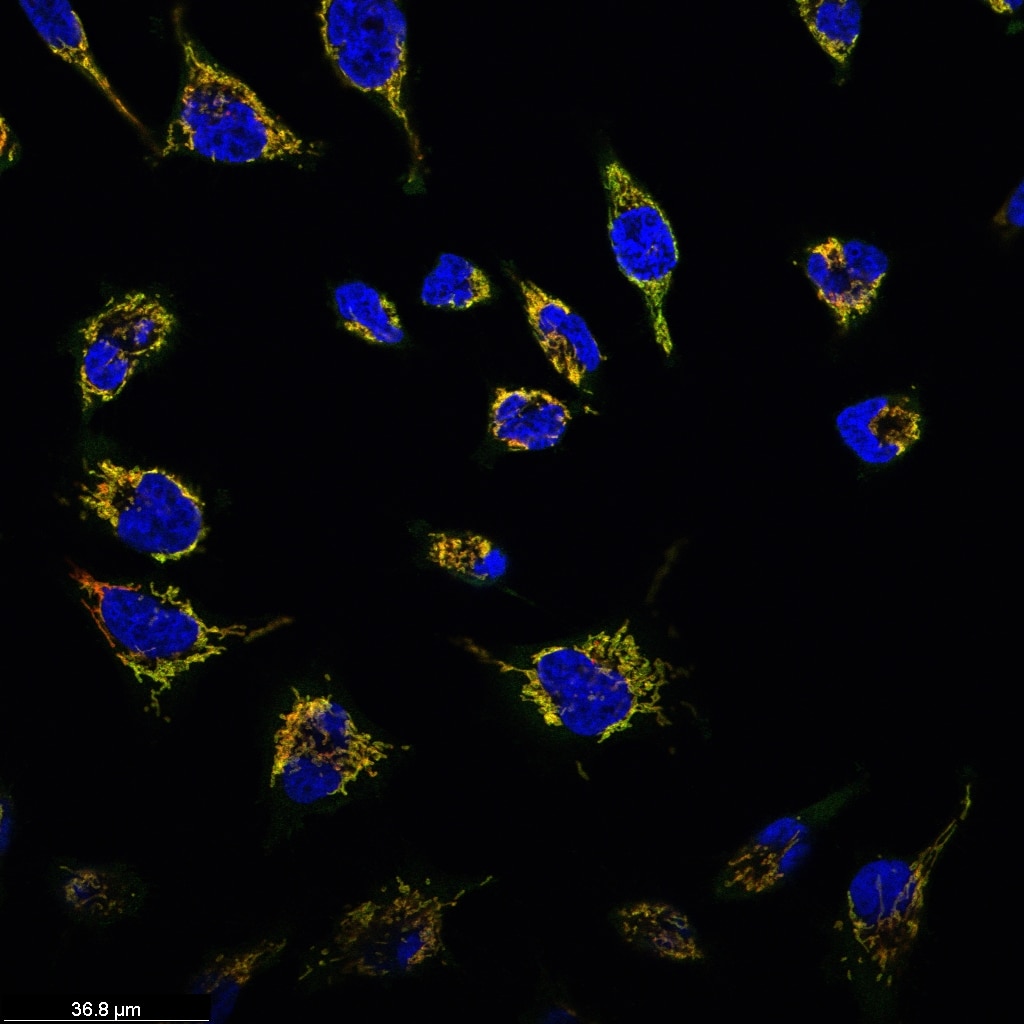 |
FH Tom (Verified Customer) (03-23-2021) | Cos7 cells fixed in 4% PFA and permeabilized in 0.1% Triton X-100. Cells blocked in 1% BSA in PBS.
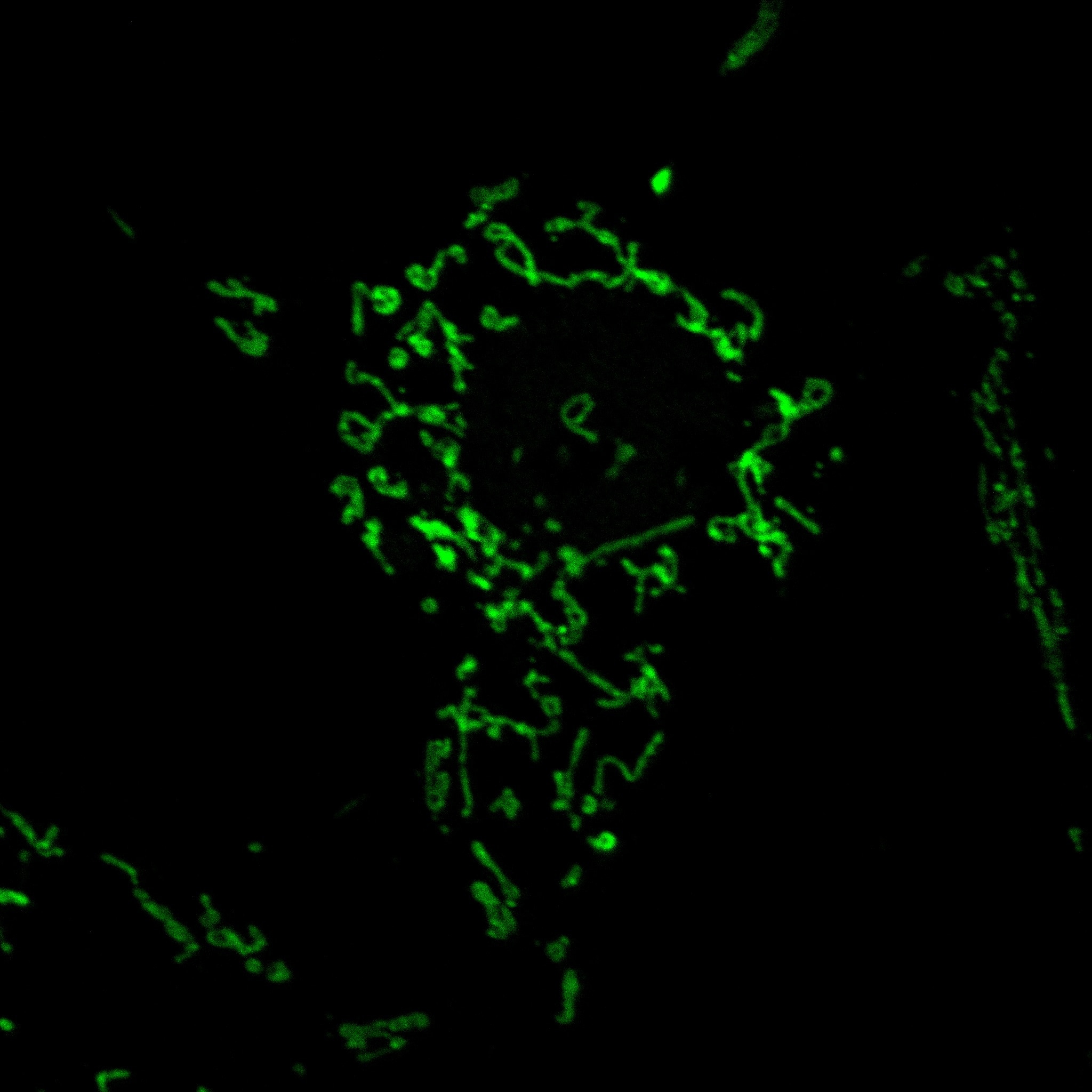 |
FH Daniela (Verified Customer) (01-08-2020) | Immunoblot of total cell lysate of HeLa cell gives three bands, one specific for human Tom40 above 37 KDa on 15% acrylamide gel, the other two no specific and with much lower intensity. The anti-Tom40 antibody worked very well and specifically when conjugated with magnetic beads for immunoprecipitation.
|
